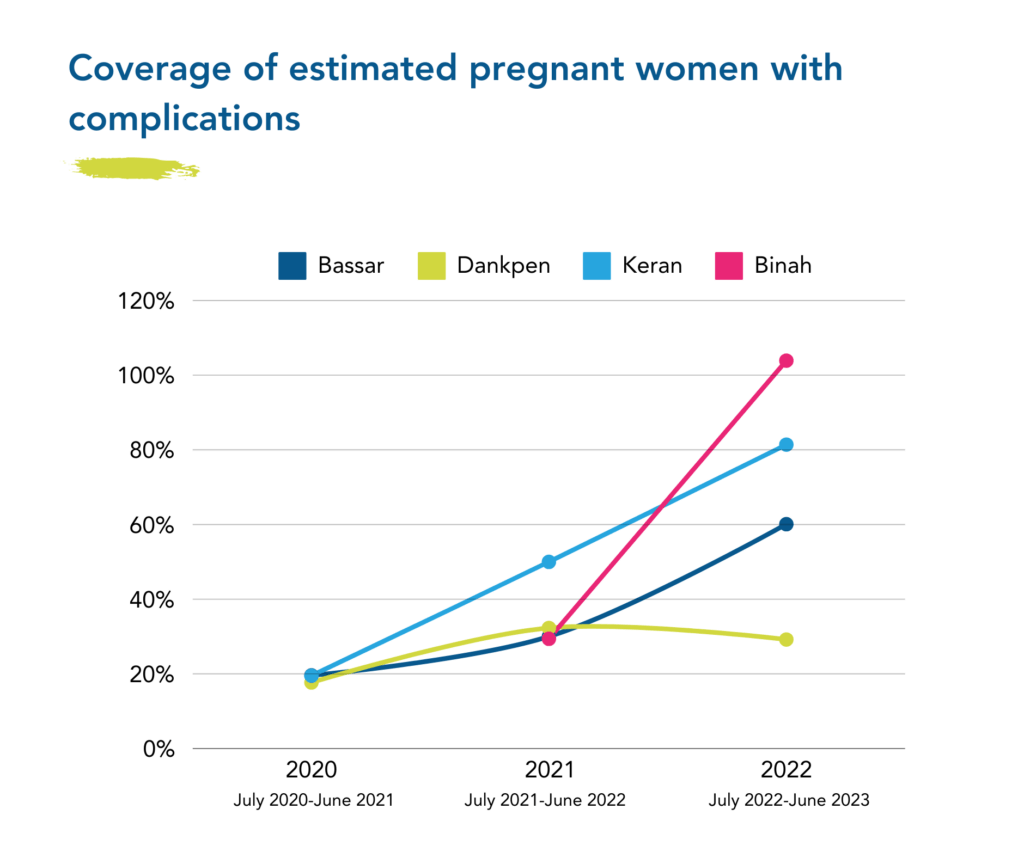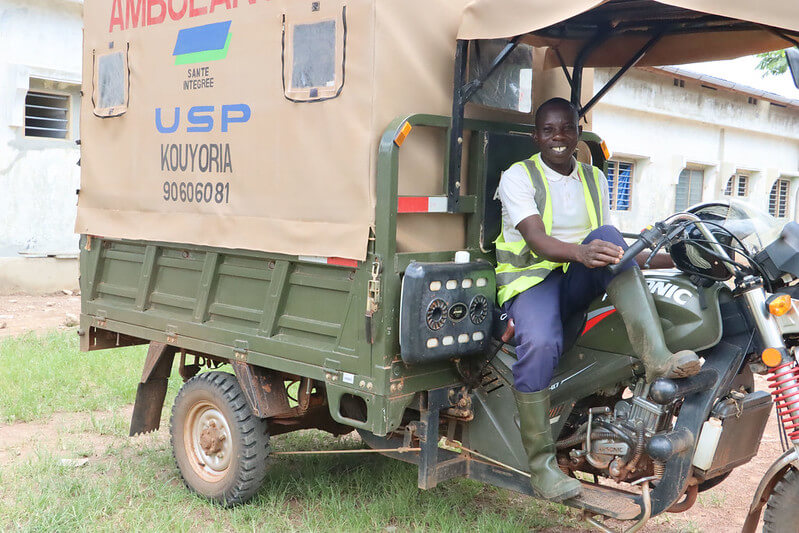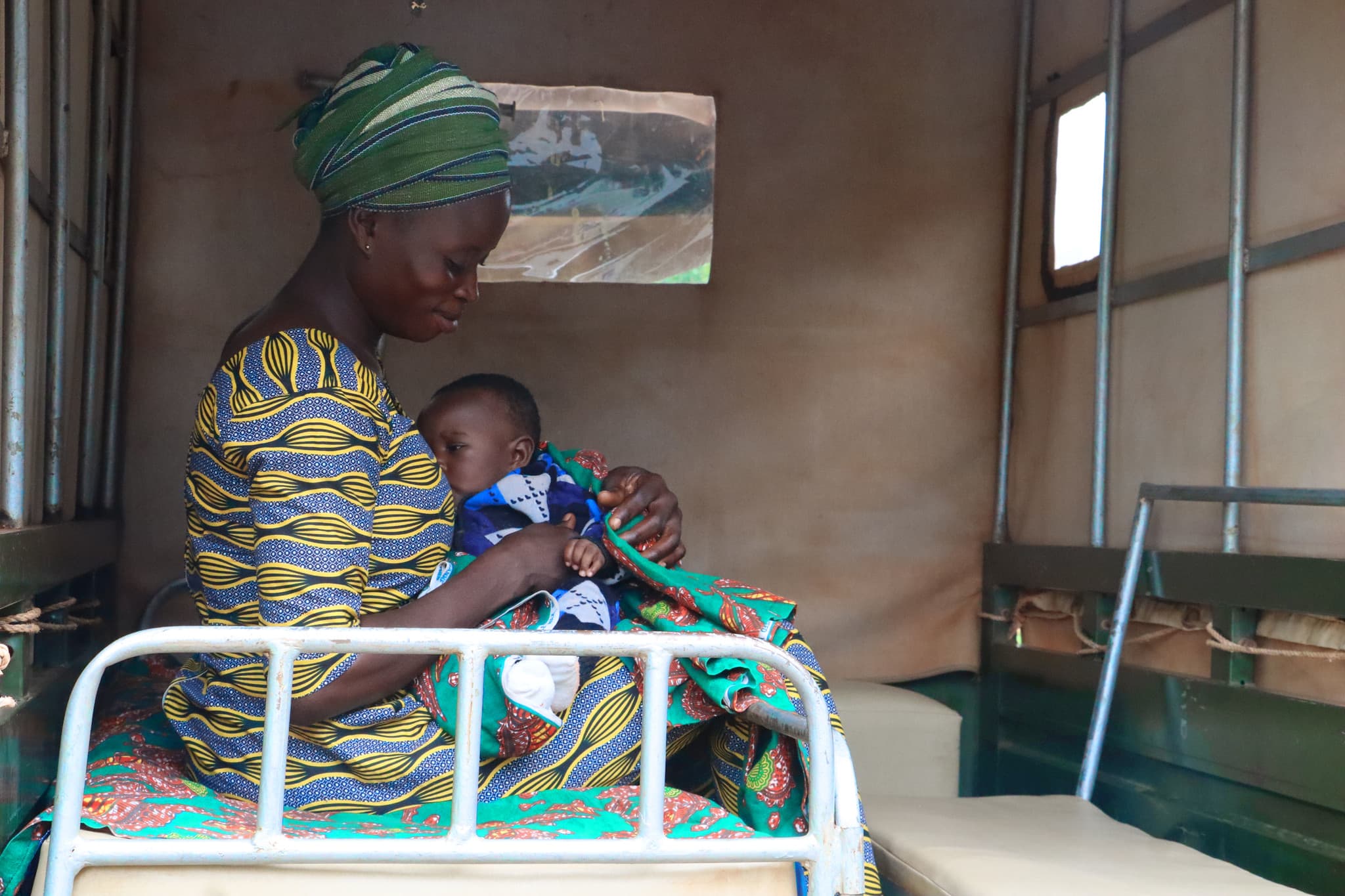In the vast and varied terrain of rural Togo, the distance from a remote village to the nearest health center or hospital can be the difference between life and death. Imagine a pregnant mother in a remote village of Togo, her labor pains beginning sooner than expected. The nearest health facility is hours away, and the cost of transport, out of reach. This scenario, all too common, is where the story of our Ambulance Program begins.
The inception of the Ambulance Program, back in 2015, was a response to a critical need: to ensure that emergency medical care was accessible to all, especially pregnant women and young children in Togo’s most remote areas. Our approach was twofold—reduce the physical distance to healthcare facilities and eliminate the cost barrier associated with emergency transport. But beyond logistics, the program sought to instill a sense of trust and reliability within the community, ensuring that when the need arises, the ambulance was ready to answer the call. With 24 motorcycle ambulances available in each health center we support and 48 trained drivers, we transported so far 2,926 pregnant and postpartum women. Today, our research confirms the effectiveness of our approach.
The study: The impact of the ambulance program
Our commitment to evidence-based action led to a comprehensive study evaluating the Rural Ambulance Program‘s impact in Togo, focusing on the critical issue of maternal health. Conducted from July 2020 to June 2023, the evaluation focused on the proportion of pregnant women with complicated obstetric cases who were transported through the ambulance program. The methodology relied on data collected through logbooks maintained by ambulance drivers. These records included detailed patient information and reasons for transport, such as labor, signs of danger, and hemorrhage, allowing for a precise evaluation of the program’s reach and impact.
The findings are compelling. Over the study period, we observed a significant leap in the coverage of obstetric complications. Initially, in the fiscal year 2020, the coverage rate of complicated obstetric cases was 18%. Impressively, this figure reached 66.5% by 2022. This statistic means that 66.5% of the pregnant women in the catchment area who were estimated to have obstetric complications received timely transportation to healthcare facilities, highlighting the program’s pivotal role in enhancing healthcare access in Togo: in Bassar, Dankpen, Kéran, and Binah districts, 2,926 pregnant and postpartum women were transported by the ambulance program. Of these, 1,030 (35%) had obstetric complications and represent 66.5% of estimated expected obstetric complications in the catchment area population. This transformation in emergency care delivery over just three years signifies that more than half of the women with pregnancy-related complications could reach the care they urgently needed.

Community at the core
Central to the program’s success is the principle of community ownership. Each ambulance operates not just as a vehicle for transport but as a community asset. Drivers are selected by the communities they serve, forging a deep connection based on trust and local knowledge. This engagement doesn’t end with the selection of drivers; communities take active roles in maintaining the ambulances, ensuring their readiness for every call to action.
This sense of ownership extends beyond the physical ambulances. It represents a collective commitment to health and well-being, a shared responsibility for each other’s lives. It’s a model that not only addresses the immediate logistical challenges of accessing healthcare but also fosters a sustainable, community-driven approach to emergency care.

“In our village, the ambulance isn’t just a vehicle; it’s a lifeline we all share. Being chosen as a driver by my community has not only deepened my bond with every household but has truly shown me how, together, we own our path to health. This ambulance is our collective commitment to safeguard each other’s lives” explains Ambulance Driver, Petit Djato.
The journey continues
As we chart the path forward, the journey of the Ambulance Program is far from complete, yet it is marked by significant achievements. Over the last three years, we’ve witnessed a massive improvement in coverage, transitioning from the initial stages to achieving 65% coverage of emergency obstetric care. This reflects our program’s capacity to adapt and enhance our reach, addressing the evolving healthcare needs of communities. While we celebrate these strides, the road ahead unveils both challenges and opportunities for further growth. Acknowledging our current success, we remain focused on the ultimate goal: ensuring every woman receives the care she needs. The study underscores the importance of continued research to fully grasp the program’s impact on maternal mortality and the crucial role of deeper engagement with our communities and partners.
The Ambulance Program stands as a testament to what can be achieved when communities, government, and NGOs come together with a common goal. It’s a reminder that every journey, no matter how daunting, begins with a single step. Or in this case, a single drive. Together, we are not just bridging distances; we are saving lives, one ambulance ride at a time.
Read the full study here.
We would like to dedicate a special thank you to Maggie Fagan who developed the research question and conducted the literature review, and to Samantha Levano who carried out data cleaning and analysis for the evaluation.

